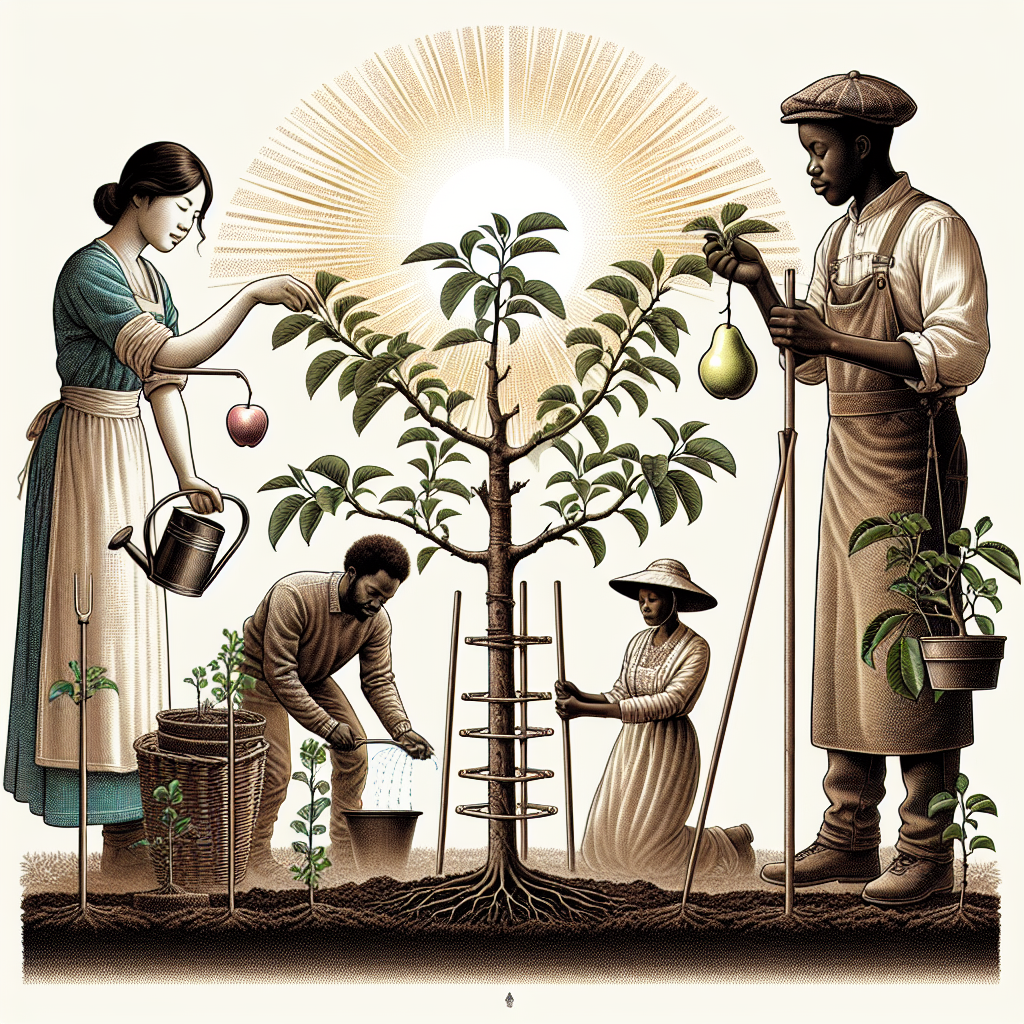A Beginner’s Guide to Growing Fruit Trees
Growing fruit trees in your own backyard is a delightful and rewarding hobby that can provide you with fresh, succulent fruits for years to come. Whether you’re dreaming of biting into a crisp apple picked straight from the branch or making homemade lemonade from your very own citrus, this guide will help you start your journey to developing a thriving fruit tree garden.
Understanding Your Zone and Choosing the Right Trees
Before you begin, it’s crucial to understand your climate and select trees that will flourish in your area. Refer to the USDA Plant Hardiness Zone Map (USDA) to identify your specific zone. This will help you determine what types of fruit trees are best suited to your local weather conditions.
Once you’ve established your zone, it’s time to choose your trees. Research nurseries that specialize in your chosen fruit trees, like Stark Bro’s (Stark Bro’s Nurseries & Orchards Co.), which offers a wide selection of fruit trees perfect for various climates.
Planting Your Fruit Trees
Placement and Spacing
The location of your fruit trees is paramount. They need full sun to produce the best fruit, which typically means at least six hours of direct sunlight each day. When planting multiple trees, take into account the mature size of the trees to ensure ample space for growth. Generally, dwarf varieties should be placed 8-10 feet apart, while standard trees might need 15-20 feet of spacing.
Soil and Fertilization
Fruit trees thrive in well-draining soil with a pH between 6.0 and 7.0. You can test your soil pH using a simple test kit from your local garden center. If your soil isn’t ideal, amend it with compost and other organic materials. As for fertilizers, opt for a specialized fruit tree fertilizer or a balanced 10-10-10 formula, always following the manufacturer’s instructions. A trusted source for fertilization guidelines is your local cooperative extension service, which can be found through the National Institute of Food and Agriculture’s website (NIFA).
Watering
Newly planted trees require consistent watering to establish roots. Provide about 5 gallons of water per week, either through rainfall or manual watering. Once established, your watering regimen will depend on your climate and soil type. A good rule of thumb is to water deeply and less frequently to encourage deep roots.
Caring for Your Fruit Trees
Pruning
Pruning is an essential aspect of fruit tree care that promotes healthy growth and maximizes fruit production. Winter or early spring, while trees are dormant, is typically the best time to prune. The key is to remove dead, damaged, or overcrowded branches to allow for better air circulation and sunlight penetration. The Arbor Day Foundation has excellent resources on how to properly prune different types of fruit trees.
Pest and Disease Management
Protect your fruit trees from pests and diseases by implementing an integrated pest management (IPM) approach. This involves monitoring your trees regularly, identifying pests and diseases quickly, and taking action when necessary. Using organic options like neem oil can be effective for certain pests and diseases. Additionally, the University of California’s Statewide Integrated Pest Management Program (UC IPM) offers comprehensive information on managing issues specific to fruit trees.
Harvesting Your Fruit
The wait for your first harvest can test your patience, as it can take several years for a tree to mature and bear fruit. However, once your trees begin to produce, the reward is sweet.
Harvest time varies depending on the type of fruit and the variety. Some general signs that fruit is ready to pick include ease of removal from the branch, a change in color, and a sweet aroma. Keep in mind that not all fruits ripen at once, so check your trees regularly.
Additional Tips for Success
- Mulching: Apply a layer of mulch around the base of your trees to retain moisture, regulate soil temperature, and suppress weeds.
- Thinning: If your tree produces too many fruits, thin them by removing some to prevent branches from breaking and to produce larger, healthier fruit.
- Support: Some fruit trees, like dwarf apple or pear trees, may need staking or support to handle the weight of their fruit.
Conclusion
With the right amount of care and patience, you’ll be able to bask in the pleasure that comes with growing your own fruit trees. Imagine how satisfying it will be when you can enjoy the fruits of your labor, picked right from your backyard. By following the guidelines outlined in this article, you’re now equipped to start your fruit tree garden.
Remember to continue learning and consulting expert sources to adapt to the unique needs of your trees as they grow. Your local garden center, master gardeners, and online horticultural communities are great resources for ongoing advice.
Embarking on the journey of growing fruit trees can be one of the most gratifying experiences for a gardening enthusiast. So dig in, tend carefully, and look forward to the day when you can say, “This delicious fruit came from my own garden.”
Growing fruit trees takes time and effort, but the harvest is well worth it—both for the delicious produce and the beauty and vitality they add to your outdoor space. Happy gardening!

